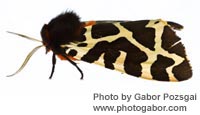 This page has been mothballed.
This page has been mothballed.
It is no longer being updated but we've left it here for reference.
Report of Workshop on Natural Heritage Reporting
- Held:
- 6th/7th March 2003
- Location:
- Edinburgh Conference Centre
- Jointly Organised by:
- Ed Mackey (Scottish Natural Heritage), Neil Bayfield (Centre for Ecology and Hydrology), Dick Birnie (The Macaulay Land Use Research Institute).
Background
This workshop was set within the context of existing UK programmes to monitor the state of the environment. In comparison with EU and other international monitoring programmes, these UK initiatives generally fail to capture adequate information on the processes driving environmental change and the management/policy responses to it. The recent SNH publication on Natural Heritage Trends Scotland (2001) has focussed attention on this commonly neglected aspect of environmental reporting. The potential for such useful information needs to be explored further, and specifically here in relation to its contribution to environmental reporting and how it can be made more relevant and effective by setting it within the Driving Forces, Pressures, State, Impacts, Responses (DPSIR) framework adopted for SoE Reporting elsewhere in Europe and internationally. There is also a need to establish mechanisms for prioritising indicators of change, and for identifying the most relevant indicators for different scales of Natural Heritage reporting.
Objectives
- To draw on the experience of a wide range of environmental professionals to examine how the DPSIR framework has been applied to SoE Reporting and in the development of environmental indicators, particularly in relation to the European Environment Agency experience, and others including the OECD.
- To develop a proposal for testing and applying the DPSIR framework to future natural heritage reporting and indicators development in Scotland.
- To identify criteria for prioritising indicators of environmental change for a range of geographic scales from local to national.
- To produce a preliminary checklist of the statistical power, resonance, cost effectiveness and other characteristics that are required of suitable indicators.
Anticipated Benefits
The workshop will provide recommendations to SNH as to how natural heritage reporting should be taken forward in the future:
- In relation to different user groups and functional scales
- What it should deliver (outputs)
- Who should be involved (contributors)
- Opportunities (e.g. for collaborative working and joint research)
Participants
The workshop was wholly funded by SNH and attendance was by invitation only. Invitees were selected on the basis of their organisations role in SoE reporting; their possible contributions to workshop discussions, and to their potential future involvement in natural heritage reporting in Scotland. Invitations were sent out to the following organisations: OECD, EEA ,UNEP-WCMC, JNCC, DEFRA, EA/CA, SE, SEPA, FC, RSPB, NTS, SWT, and relevant local government organisations.
Programme and Reports
Thursday 6th March 2003
- 1030
- Tea/coffee on arrival & registration
1. Introduction
- 11.00- 11.15
- Dick Birnie (Macaulay Land Use Research Institute, Aberdeen) Introduction
to the workshop: aims and definitions
 68,839
bytes.
68,839
bytes.
2. Why do we do it?
- 1115-11.45
- Ed Mackey (SNH, Edinburgh) Natural
heritage reporting and indicators (
 2,689,458
bytes.): statutory requirements, corporate
justification and user
community needs.
2,689,458
bytes.): statutory requirements, corporate
justification and user
community needs.
What are the statutory requirements for reporting at different Natural Heritage functional scales, what corporate and other justifications have an influence? Who are the data users (internal and external) and how are their needs taken into account?
- 1145-1200
- Discussion
1200-1245- Prof David Briggs (Imperial College, London) What
environmental indicators can (and can't)
do.
Or nine lessons and no carol
 1,656,571
bytes.
1,656,571
bytes.
A provocative and challenging comparison of approaches, and critical review of issues. A review of the key environmental reports (e.g. OECD, EEA, UK, Scotland) to show who is doing what.
- 1245-1300
- Discussion
- 1300-1400
- Buffet lunch
3. What and where should be reported on?
- 1400-1415
- Introduction
to discussion breakout
 326,497
bytes. Three groups work in parallel to discuss:
326,497
bytes. Three groups work in parallel to discuss:
- Who is the target audience
- What should be the functional scales for NH reporting (local, national, by designation type or whatever)
- What are the requisite characteristics of effective indicators (check list of key characteristics)
- What is the role of the DPSIR framework (how do we see its usefulness)
- 1500-1530
- Breakout rapporteurs sum-up
- 1530-1600
- Tea
4. Prioritising indicators
- 1600- 1630
- Neil Bayfield and Phillip Bacon (CEH, Banchory) Introduction
to Decision workshop approach to prioritising
indicators at different functional scales (local
regional, national?)
 326,497
bytes.
326,497
bytes. - 1630-1730
- Groups discuss the proposed framework for prioritising indicators
- 1730-1800
- Discussion of framework led by group rapporteurs
- 1830
- Dinner
5. EEA Perspective
- 2000
- Jock Martin (EEA, Copenhagen) Biodiversity
and EEA. From
monitoring to knowledge on Biodiversity in Europe.
Some thoughts and challenges
 990,442
bytes.
990,442
bytes.
Friday 7th March 2003
Decision workshop: prioritising indicators
- 0900-1100
- Groups discuss functional scale requirements then fill in individual rankings on a decision tree to identify perceived priorities
- 1100-1130
- Coffee
- 1130-1230
- Breakout rapporteurs sum-up
priorities from the priorities workshops
 250,822
bytes.
250,822
bytes. - 1230-1330
- Lunch
Getting it right
- 1330-1430
- Three parallel Breakout sessions each consider:
- What needs to be done?
- Working together
- Common research themes
- Common understanding of purpose
This session will challenge each group to come up with a vision of what future NH reports for Scotland might look like. It will be informed by all the previous discussions and focus on what needs to be done, and by whom, to take the process forward. In effect, we will be developing an action plan for the next stage of NH reporting in Scotland.
1430-1515- Breakout rapporteurs sum-up what needs to be done to deliver effective reporting on the state of the natural heritage
- 1515-1545
- Final discussion and summary
- 1545
- Tea and depart

